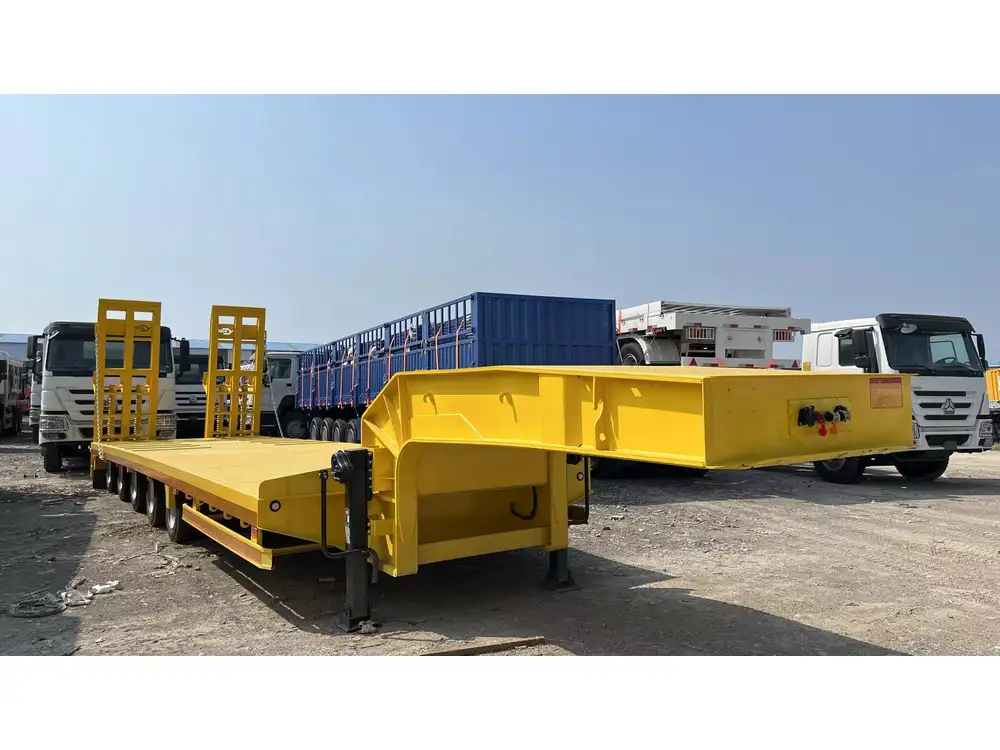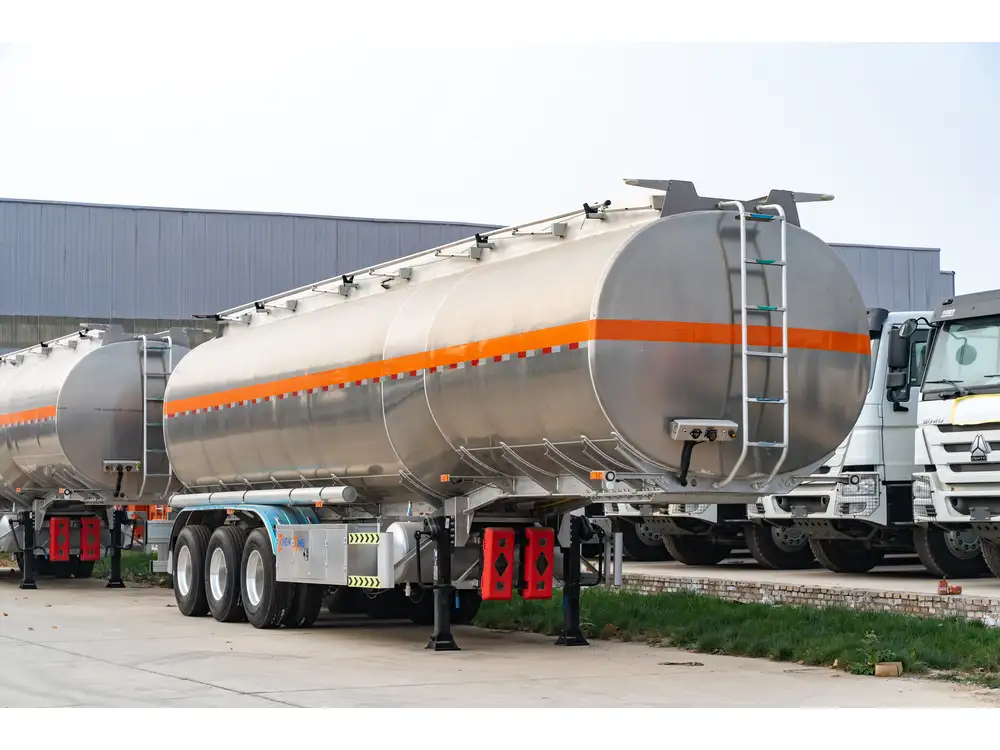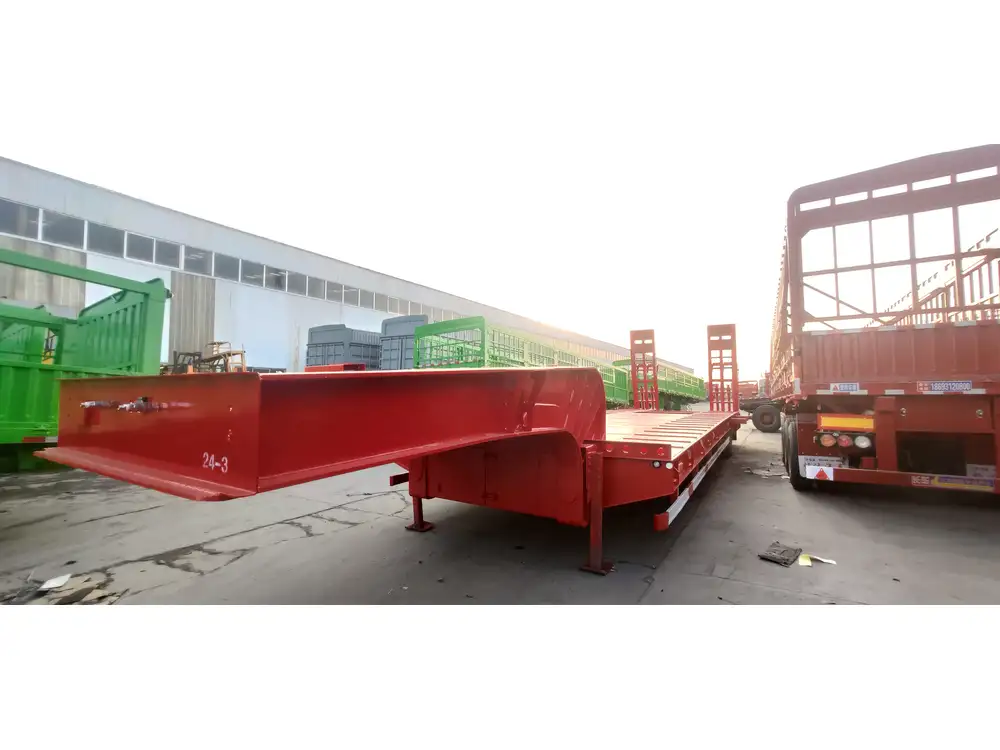When it comes to transporting heavy materials, whether for construction, landscaping, or waste management, dump trailers stand out as essential assets. This article delves into the various sizes and capacities of dump trailers, enabling businesses and individuals to choose the right equipment for their specific needs.
1. The Fundamentals of Dump Trailer Sizes
1.1 Typical Dimensions
Dump trailers come in various dimensions tailored to meet diverse operational requirements. Understanding these sizes is crucial for anyone considering the purchase or rental of a dump trailer. Here’s a quick overview of standard dump trailer dimensions:
| Type | Length | Width | Height | Payload Capacity |
|---|---|---|---|---|
| Small Trailer | 6 – 10 ft | 5 – 6 ft | 2 – 3 ft | Up to 3,500 lbs |
| Medium Trailer | 10 – 14 ft | 6 – 7 ft | 3 – 4 ft | 7,000 – 10,000 lbs |
| Large Trailer | 14 – 24 ft | 7 – 8 ft | 4 – 6 ft | 10,000 – 20,000 lbs |

1.2 Variability in Construction & Design
While the above table provides a baseline for understanding trailer sizes, variability in construction materials, design, and purpose can lead to discrepancies. For instance, a heavy-duty aluminum dump trailer might weigh significantly less than a comparable steel model and thus offer greater payload capacities. Additionally, the design configurations, such as single-axle versus dual-axle setups, also influence the overall dimensions and load capacities.
2. Understanding Payload Capacities
2.1 Defining Payload Capacity
Payload capacity refers to the maximum weight a trailer can safely transport, excluding the trailer’s own weight. An accurate understanding of this metric is essential to avoid overloading, which can lead to safety hazards and legal penalties.

2.2 Calculating Payload
When calculating the payload capacity, it’s vital to consider the Gross Vehicle Weight Rating (GVWR) and the trailer’s curb weight. The formula is simple:
[ \text{Payload Capacity} = \text{GVWR} – \text{Curb Weight} ]2.3 Legal Considerations and Weight Regulations
In many regions, including the United States, there are strict legal regulations regarding the maximum allowable weight on public roads. Operating beyond these weight limits can result in expensive fines and increased liability in case of accidents. Familiarity with local weight regulations can help avoid such issues and ensure safe transit.
3. Choosing the Right Size Dump Trailer

3.1 Assessing Your Needs
Choosing the right size dump trailer hinges on evaluating specific needs. Here are some questions to consider:
- What materials will be transported? Heavier materials (e.g., gravel, sand) require larger, more robust trailers.
- What is the regular transportation distance? Longer distances might necessitate larger trailers for efficiency.
- What are the weight restrictions on your familiar routes? Select a trailer that meets or exceeds these limitations to ensure compliance.
3.2 Comparing Common Sizes
| Usage Scenario | Recommended Trailer Size | Reason |
|---|---|---|
| Residential Cleanup | 6 – 10 ft | Ideal for yard waste, light debris |
| Construction Sites | 10 – 14 ft | Better suited for heavy loads like lumber |
| Rock and Soil | 14 – 24 ft | Necessary for transporting dense materials |
4. Features Impacting Size and Functionality

4.1 Bed Height and Slope
The height of the trailer bed and its slope significantly influence unloading efficiency. A steeper slope facilitates quicker unloading but can make loading more challenging. Thus, a balance must be struck based on the primary use of the trailer.
4.2 Sidewalls
Many dump trailers come with removable or foldable sidewalls, which can augment their utility. This feature can adjust the effective load capacity and type of materials carried.
4.3 Hydraulic Systems
The hydraulic lifting system is crucial for operation. The strength and speed of the hydraulic lift can vary between models, influencing operational efficiency. When assessing options, reviewing these specifications is vital to ensure seamless functionality.

5. The Importance of Trailer Weight
5.1 Considering Weight Types
Understanding the distinction between the curb weight (weight of the trailer without any load) and the GVWR is essential for effective operation:
- Curb Weight: The base weight of the trailer itself, important for calculating payload.
- Gross Vehicle Weight Rating (GVWR): The maximum weight a trailer can safely handle, including both the trailer’s weight and its load.
5.2 Optimal Configuration
Choosing a trailer configuration (single vs. dual axle) is directly related to its weight capacity and balance. Dual axle trailers support greater loads, enhance stability, and reduce tire wear, but often come at a higher cost.

6. The Benefits of the Right Dump Trailer Size
6.1 Enhanced Efficiency
The right size trailer improves operational efficiency by reducing the number of trips needed for transporting materials, saving both time and diesel costs.
6.2 Safety Concerns
Using a dump trailer that matches the load reduces the chances of accidents due to overloading and ensures compliance with road regulations, providing peace of mind.

7. Common FAQs About Dump Trailer Sizes
7.1 How do dump trailer sizes vary based on the application?
Dump trailers vary in size largely based on their intended use. For instance, contractors involved in construction work typically opt for larger trailers to accommodate heavier materials, while homeowners might need smaller versions for yard waste.
7.2 What is the average cost of a dump trailer based on size?
The cost of dump trailers can dramatically vary based on size, material, and features. For example, small trailers can range from $3,000 to $7,000, while larger, more robust models can start from $10,000 and go up to $30,000 or more.

7.3 Can I modify the size of a dump trailer?
While modifying a dump trailer is technically possible, doing so can be cost-prohibitive and may not always yield the desired results. It’s often more efficient to select a trailer that meets your size and capacity requirements from the outset.
8. Making the Right Investment
8.1 Evaluating Long-term Needs
Before making a purchase, consider your anticipated needs for the next several years. Investing in a slightly larger or more durable trailer could yield significant savings in long-term operation costs.

8.2 Warranty and Support
Ensure that the trailer you select comes with comprehensive warranties and support. Quality manufacturers stand by their products and offer assistance in case of any arising issues.
Conclusion
Navigating the myriad of options available for dump trailers can be daunting but understanding sizes, capacities, and functionalities simplifies the decision-making process. Whether you are a contractor needing a robust transporting solution or a homeowner tackling a landscaping project, selecting the right dump trailer size dramatically enhances productivity, efficiency, and safety. By considering the factors outlined in this guide, you’ll be well-equipped to make informed decisions that align perfectly with your operational requirements.



